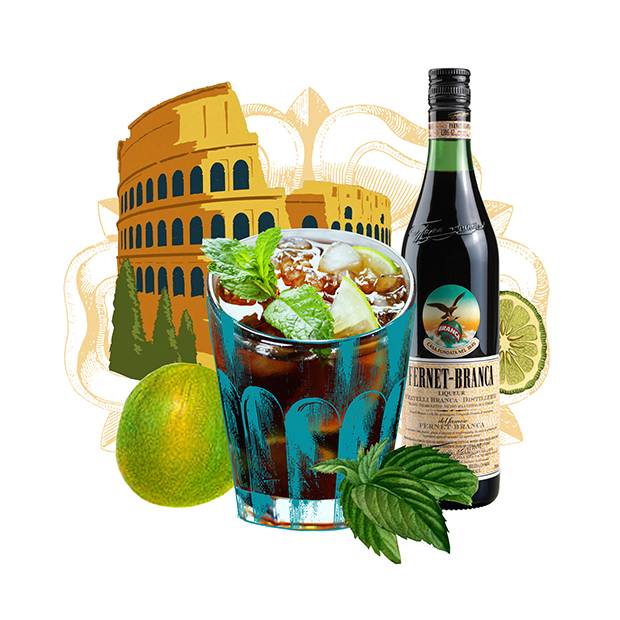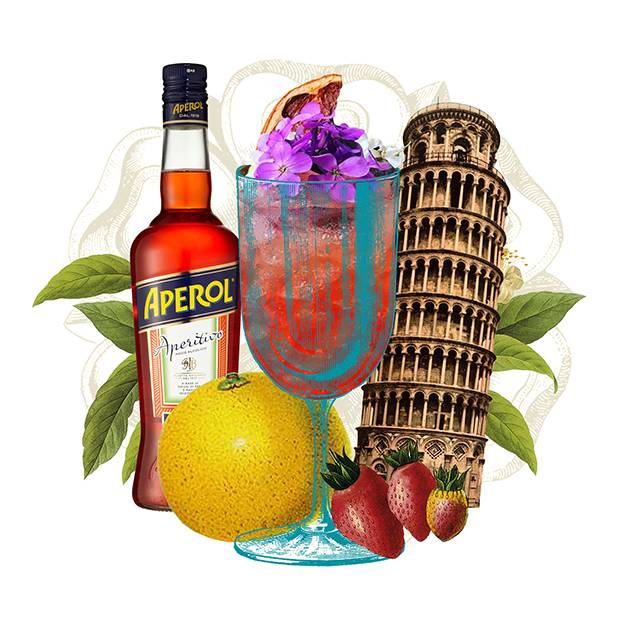By now, most of us are fluent in Italian coffee. It stands to reason, then, that if we can learn the difference between ristretto and lungo, we should also be able to master beginner Italian spirits – beyond the Negroni.
In fairness, it's a massive, ever-changing, hyper-local category with practically infinite regional variations and family recipes that almost require a dissertation-level commitment to truly command. But that shouldn't stop you from trying to develop a framework for dealing with the most common spirits you're likely to come across, so you can tell an aperitivo from an amaro and a carciofo from a rabarbaro. Allora, what follows is a primer.
The aperitivo category is a big one, since it includes a range of bitter drinks that are meant to be enjoyed in the late afternoon or early evening at apericena (happy hour). These drinks stimulate the palate, opening up a pathway to dinner – typically composed of flavoured spirits that have a bitter-citrus taste profile. Campari and Aperol are the most recognizable and widely available. In some Canadian markets, though, the options have doubled thanks to the arrival of Luxardo Aperitivo Spritz (similar to Aperol) and Capo Capo. The latter is made in Trento, in northern Italy, but designed in partnership with some people from Canada – Henderik & Co. and Owen Walker, part owner of Toronto's El Rey Mezcal Bar, who was brought on board to ensure the formula was cocktail friendly.
Amaro is a category with a wild range of flavours but it tends not to have that signature bitter-orange flavour that defines Campari and company. There's a loose taxonomy that divides amari into about a dozen styles, the most commonly exported being fernets, "Alpine" style, rabarbaro and carciofo.
Fernets, the most famous of which is Fernet-Branca, assault the palate with bold, earthy and sharp flavours. By comparison, herbal Alpine-style are relatively subtle (Braulio is a great example). Rabarbaro and carciofo are among the most approachable amaros, able even to cross over into apericena fodder. Rabarbaro is made with rhubarb and is lightly bittered, sweet and low-alcohol, needing only a splash of soda to turn it into a smart mixed drink. Cross-border shoppers should keep their eyes peeled for Zucca, a fine Milanese example of this category, and within Canada, the Vancouver area's Woods Spirit Co. makes a wildly popular rhubarb-forward amaro.
While we wait for more choice in the rabarbaro category, we should count ourselves lucky to have Cynar (pronounced chee-nar), a brilliant, dry and utterly sophisticated low-alcohol liqueur made from artichokes. Although it's used in many bars to substitute as a base or accent in bespoke creations, such as Cynar sours and Negronis, its chief virtue is that adding a small amount of fresh grapefruit to it makes it an ideal drink for summer afternoons. Cynar is the best-known example of a carciofo, a genre of artichoke and cardoon liqueurs that stems from Italy's long-established, internalized, zero-waste ethos. Why waste inedible artichoke when it can be turned into booze?
One of the lesser-known amaro styles is the maddeningly non-specific "light" category, which includes Nonino Quintessentia Amaro, an exquisite, perfectly balanced spirit made by adding a maceration of light herbs and spices to a grappa base.
House Nonino is better known for its acclaimed grappa; a little over 40 years ago, it was the first to launch a single-varietal expression, a move that changed the way people make the spirit. It's still, of course, made from the stems, seeds and stalks (no juice) that are left behind after the grapes are pressed for wine, but thanks to Nonino, this product made from agricultural waste has gained a lot more respect. Usually unaged, it's got nothing to hide behind, so the intense, sometimes rough flavour is an acquired taste. Best to try to acquire it after dinner, paired with dessert.
On the sweeter side, there are the nut liqueurs: nocino, made from walnuts; almond-flavoured liqueurs, such as amaretto; Frangelico (hazelnuts); and blended nut liqueurs, like nocello. Maraschino, made from maraska cherries (including the bitter pits), is not suitable for sipping but indispensable in certain cocktails, like The Last Word, a blend of gin, green chartreuse and maraschino. Limoncello, a Sicilian tradition that's essentially lemon-zest-infused, sweetened vodka, is also delicious when done well, like the one made at Vancouver's Long Table Distillery, which was inspired by traditional versions.
And another traditional category is beginning to make a comeback – rosolio, a relatively obscure Southern Italian rose petal liqueur. Italian bartender Giuseppe Gallo is trying to bring it back with his own version, Italicus, which has a citrusy, floral and lightly herbal take. It's not easy to find in Canada right now, but it's generating a lot of excitement in Europe and the United States, so we should expect to hear a lot more about it.
If rose petals sounds like a bizarre flavour for a liqueur, consider that it's no stranger than grape stalks or artichokes – not to mention whatever bizarre roots and barks they use to make the highly esoteric Fernet-Branca. In Italy, if you can eat it – and even if you can't – it can turn it into delicious booze.
COCKTAIL RECIPES

Lori Langille
Tar Pit
- 1 ounce dark or black rum (Gosling’s is ideal)
- 1 ounce Demerara rum
- 1 ounce Fernet-Branca
- ½ ounce orgeat
- ½ ounce Pimento Dram
- 1 ounce lime juice
- Sprig mint
- Lime, sliced
Shake ingredients with ice and double-strain into glass filled with crushed ice.Garnish with mint and lime slice.
Source: Cocktail Culture: Recipes and techniques from behind the bar by Shawn Soole and Nate Caudle

Lori Langille
Mio Fascino
- 1 ½ ounce Capo Capo
- 1 ½ ounce pisco
- ½ ounce simple syrup
- ½ ounce lemon juice
- ½ ounce lime juice
- 1 egg white
- 2 dashes bitters

Lori Langille
Fresh Spritz of Bel Air
- 1 ounce Aperol
- 1 ½ ounce strawberry-infused Byrrh
- 1 ounce lemon juice
- ½ ounce grapefruit juice
- 1 ounce soda (to fill)
- Dried grapefruit
- Edible flowers
Add first four ingredients to a shaker filled with ice. Shake and strain into a glass filled with crushed ice. Top with soda and garnish.
Source: Pretty Ugly, Toronto
AFTERNOON DELIGHTS
Food and drink go hand and hand, especially when it comes to Italian cocktails. Three of Canada's masters of Italian cuisine offer their picks for the best bites to pair with your drink.
Fiori di zucca

"Aperitivo is not only the ritual of enjoying a drink after work, the drinks stimulate your appetite. The best aperitivo food pairing is something small, slightly fatty or spicy which pairs well with a nice sparkling, crisp wine or a refreshing cocktail," says Rob Gentile, executive chef at Buca restaurants in Toronto.
"The drink cleanses the palate, the food makes you want to sip more on that sparkling and so on. It's the perfect combo. For the summer, I can't think of a better aperitivo pairing than lightly fried zucchini blossoms. This summer's zucchini blossom dish, with seasonal ingredients, has the perfect balance of spice, freshness and a bit of fattiness required to perfectly pair with an afternoon cocktail before heading out for a meal."
Spring Salmon Belly en Saor

"Fried and then pickled sweet and sour fish, typically sardines, are a staple cicchetti served in the bacari of Venice," says Mark Perrier, chef and co-owner of Vancouver's Osteria Savio Volpe. "In this version, I've substituted fatty wild spring salmon belly for the sardines. The richness of the oily fish, bright acidity of the onions, and sweetness of the raisins work together to pair beautifully with any number of classic Italian aperitivos served at the start of a meal."
Aragosta é Calamari di Adriatico

"This is one of my favorite aperitivos because it is full of flavour, looks great and who doesn't love lobster and calamari," says Michael Boragina, chef at The Bicycle Thief in Halifax. "Aperitivo time is great for sharing time with friends and family sharing the events of the day and catching up."